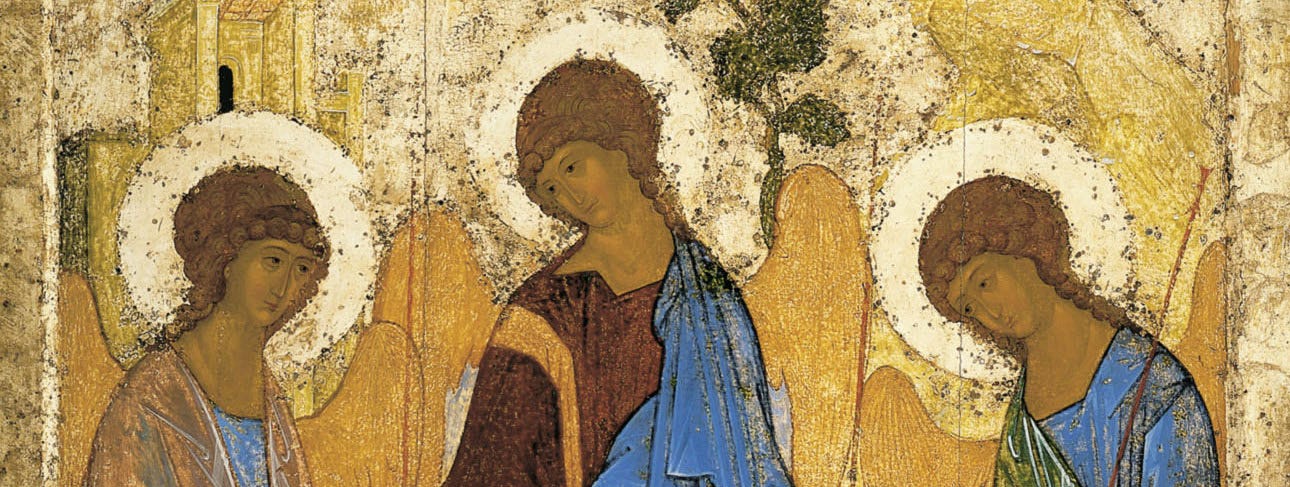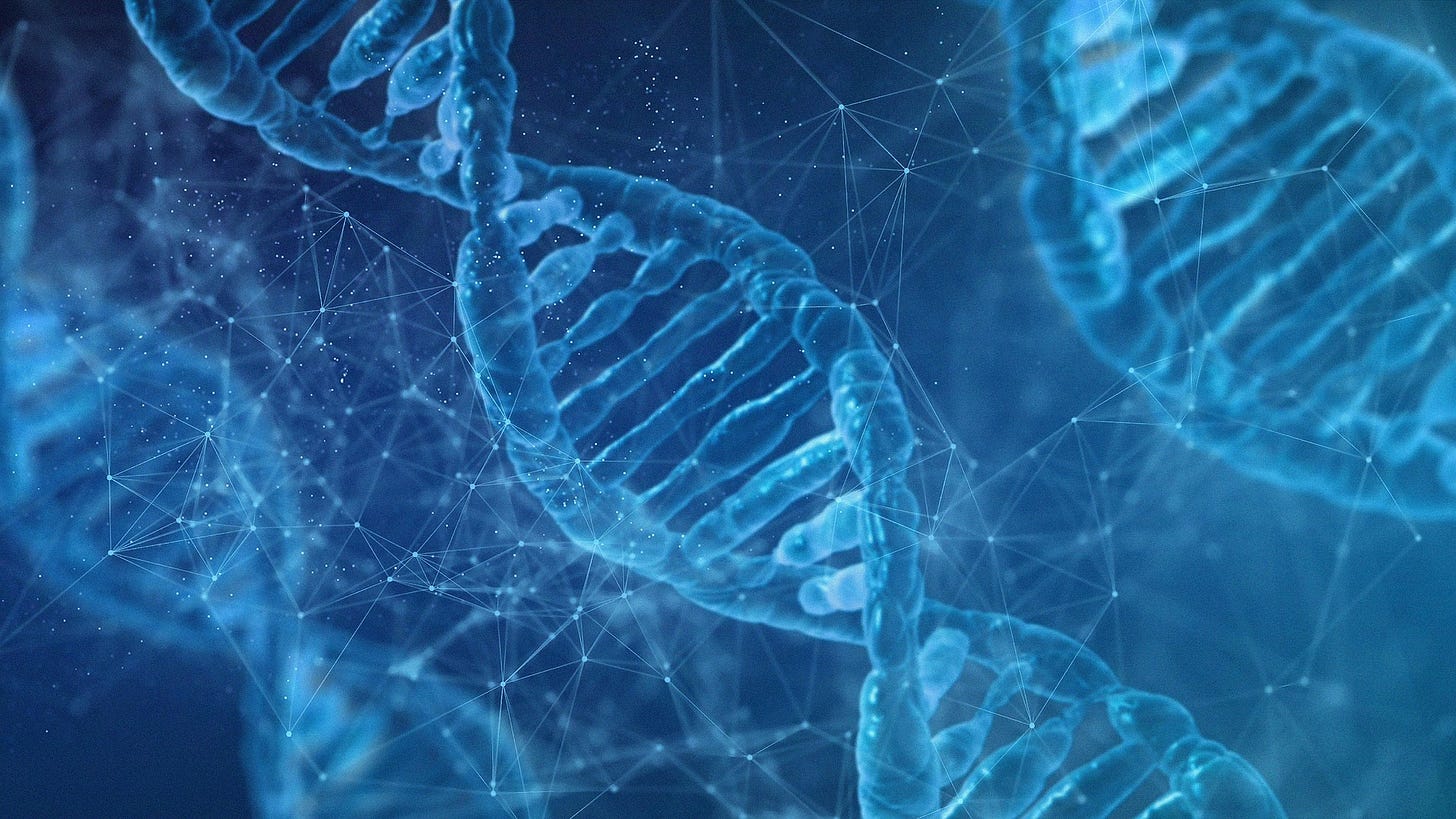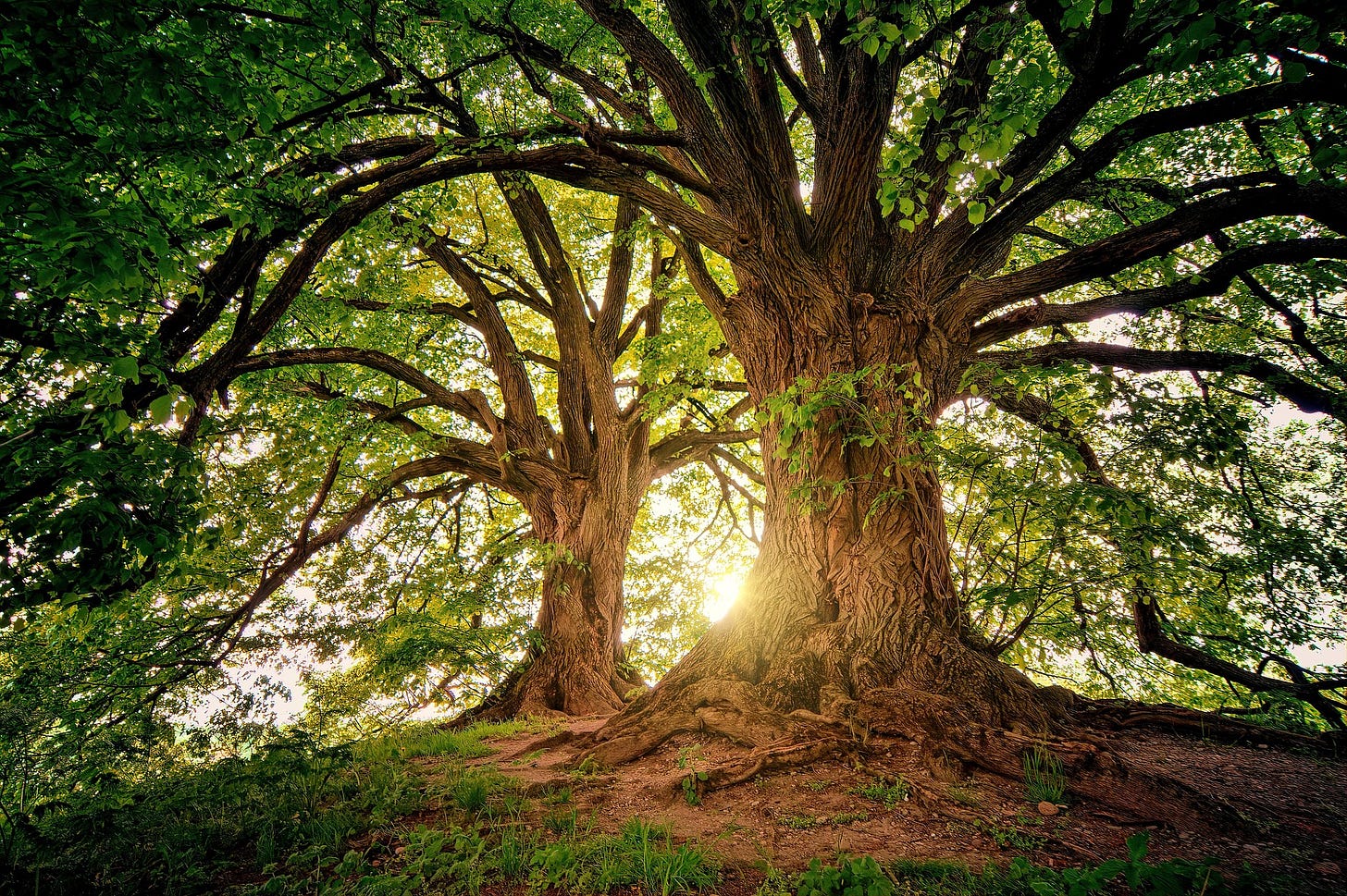Faith in Nature
"Since the creation of the world, God's invisible attributes... His eternal power and divine nature, have been clearly seen, being understood through what has been made." Romans 1:20
BWV 129: Gelobet sei der Herr, mein Gott - J.S. Bach, created for Trinity Sunday church services and first performed in Leipzig, Germany June 8, 1727.
Today is Trinity Sunday, a day when Christians reflect on one of the most central and mysterious beliefs of the faith… That God is one, yet exists as three persons, Father, Son, and Holy Spirit.
Unlike Christmas or Easter, Trinity Sunday doesn’t commemorate a historical event. Instead, it invites us to contemplate the very nature of God.
Today we will examine if God can be seen in the grand design of reality and the universe itself.
Does Creation Reflect the Trinity?
When Christian astronomer Johannes Kepler looked at the night sky, he believed he was thinking God's thoughts after Him. There was, for Kepler and many who followed, a sense that the patterns of the cosmos were not simply beautiful but intelligible and meaningful. They did not merely exist. They spoke. They revealed something of the mind behind them.
But what if they reveal more than thought? What if they hint at the very shape of the divine life itself? What if the structure of reality bears a faint echo of what Christian tradition calls the Trinity?
If God is one Being in three Persons, and if this God is also the Creator of the natural world, then it is worth asking: does the created order reflect its source? And if so, how?
This is not a question of proving doctrine through science. It is a question of whether we are being invited to look at the world differently and to see it, not merely as raw material, rather as something sacramental.
Two Books: Scripture and Nature
The idea that God reveals Himself through creation is ancient. Early Christian thinkers often spoke of two books: the Book of Scripture and the Book of Nature. Augustine wrote that the created world is like a great book opened before our eyes. Its letters are not ink on a page but stars, rivers, trees, and living creatures. The world, in this view, is not meaningless. It is articulate.
Thomas Aquinas developed this further through his doctrine of analogy. He argued that creatures cannot reflect God directly, because God is infinite and creation is finite. But creation can bear analogical resemblance to its source. The cause leaves traces in the effect, even if the likeness is partial. If God is triune, it would not be surprising to find certain triadic structures throughout the world not as proofs, but as echoes.
DNA and the Triplet Code
One of the most striking triads in nature is found in the structure of DNA. The genetic code that governs all life on Earth is built from sequences of three nucleotides, called codons. Each codon corresponds to a specific amino acid, which then becomes part of a protein. This triplet code is used universally, from single-cell organisms to human beings.
Why three? A code of two would not be complex enough to encode all the amino acids. A code of four would be inefficient. Three is instead the optimal amount to cover all 20 aminos.
What is striking is not just the utility of this system but its simplicity and universality. Every cell in your body functions by reading three-letter instructions. Life is built on triplets.
We do not need to force this into a theological claim, but it is at least suggestive. A fundamental pattern of life is triadic. The basic script of biology is written in threes.
Solid, Liquid, Gas
Matter also exists in three primary states: solid, liquid, and gas. The same substance water for example can exist in any of these forms. Its essence remains unchanged, even though its properties differ radically.
This analogy has often been used to explain the Trinity, though with caution. Water cannot exist in all three states simultaneously, and analogies of this sort can slide into heresies like modalism. Still, it is notable how many natural systems operate in threes. The structure of matter, like the structure of language, often works best when built around threefold relationships.
Time: Past, Present, Future
Our experience of time is also triadic. We live within a continuum structured by past, present, and future. Each is distinct, yet none can exist apart from the others.
Augustine reflected deeply on this in his Confessions. He wrote that the past exists in memory, the future in expectation, and the present in attention. All three dimensions form a unity in the soul.
Some theologians have seen this as more than a psychological insight. If God is the author of time, and if time flows in a triadic pattern, might that pattern reflect something about its source?
Human Nature: Body, Soul, and Spirit
Christian anthropology has long described the human being as composed of body, soul, and spirit. The body connects us to the material world. The soul encompasses mind, emotion, and will. The spirit is the dimension of the self that reaches toward the divine.
This triadic structure is not mechanical. These aspects of the self are not compartments. They interpenetrate. To harm the body is to disturb the soul. To deaden the spirit is to darken the mind. We are not assembled like machines but woven like fabric.
In the Christian tradition, to be human is to be made in the image of God. And if God is a communion of three, then our own structure might reflect that communion, not in a direct or exhaustive way, but in outline?
Trinitarian Patterns in Ecology
Modern ecology has shown that natural systems often depend on threefold processes.
Photosynthesis, the foundation of nearly all life on Earth, involves three main phases. Cellular respiration, through which organisms convert food into energy, also involves three. Even the carbon, nitrogen, and water cycles follow threefold rhythms of transformation.
Ecological systems depend on balance. Production, consumption, and decomposition must all occur for an ecosystem to survive. Remove any one, and the system collapses.
Some theologians, particularly those working in eco-theology, see in this not just function but reflection. The interdependence of living things mirrors the self-giving life of the Trinity. Creation is not a collection of parts but a web of relationships. It is relational, because its source is relational.
Cosmology and the Structure of the Universe
At the largest scale, the universe also displays triadic features.
Galaxies are shaped by the interaction of three major components: ordinary matter, dark matter, and dark energy. Each plays a distinct role, and none can be removed without altering the shape of the cosmos.
The fundamental forces of physics are often grouped in threes. At the subatomic level, we find protons, neutrons, and electrons. Theories of particle physics describe matter in terms of three generations of particles. Even the dimensions of space, length, width, height, form a trinity.
These patterns are not evidence of divine life in themselves. But they do raise a question: why does reality, at so many levels, organize itself in threes?
Vestiges of the Trinity
Medieval theologians spoke of vestigia Trinitatis (traces of the Trinity) in creation. Bonaventure described all creatures as bearing three marks: existence, form, and purpose. These, he believed, pointed to the Father, the Son, and the Spirit.
Maximus the Confessor developed this further. He saw the entire cosmos as a theophany. Creation was not just made by God. It was a kind of reflection, a mirror, it was not perfect but it did have meaning.
These thinkers were not naive. They knew the limits of analogy. But they also believed that to look deeply into creation was, in some way, to begin to see God.
Quantum Possibilities
Some contemporary thinkers now have looked to quantum physics for fresh ways of imagining reality.
At the quantum level, particles do not behave like classical objects. They exist in states of superposition, collapse into measurable outcomes when observed, and display entanglement across distance. Some interpretations propose that reality emerges from the interaction of three elements: potential, actualization, and observation.
This is speculative territory though not without resonance. Christian theology has long spoken of God as pure being (Father), self-expression (Son), and relational presence (Spirit). Potential, act, and relation. There are echoes here, even if only faint for now until we explore more.
Caution and Clarity
It is important not to overstate the case.
The Trinity is not a pattern to be discovered in science, rather a mystery revealed in Christ. Creation may reflect the Trinity but it does not explain it. Nature perhaps is both divine and created, it is possible even that we are not supposed to know.
Analogies can help here but they can also mislead. The water analogy, for example, can become a form of modalism, a refuted heresy from early Christanity that God is just one person who shows up in different ways at different times. The DNA analogy can also reduce persons to processes. The goal is not to find a perfect match, but to allow creation to awaken us to contemplation.
In this sense, Trinity Sunday is not really about finding the answer but engaging in thought about it, to elevate your consciousness. Sometimes in life we do not need to know, or knowing might harm us. Though this is not to say ignorance is bliss.
Living Within the Pattern
If reality is, in some deep way, shaped by the Trinity, then our lives are not accidents. We are participants in a larger order one marked by difference-in-unity, by relationship, by mutual indwelling.
To live in this world attentively is to be drawn into a kind of liturgy. The created order becomes a kind of icon. Its rhythms, forms, and patterns do not merely serve us. They form us and teach us how to see. Acting as a guide in how we form our perceptions of reality and life.
Final Reflection
On Trinity Sunday, Christians reflect on a mystery that can never be reduced to formula. Yet it is not a distant truth, it is closer than we think. It may even be reflected in the world around us through the structure of our bodies, in the rhythm of time and in the language of life itself.
To recognize these patterns is not to collapse theology into science. It is to suggest that creation, at its best, is a kind of grand design and at heart is a foundation in the form of a triad.
God bless.
"Holy, holy, holy is the Lord God Almighty, who was, and is, and is to come." Revelation 4:8







The discussion around the Trinity is a difficult one. Such an intriguing, precious mystery that is so important to us. Many of us want only to keep it in tact, but sometimes at the cost of admiring its beauty. You’ve described it well. Thank you for the insight and keeping the holy calendar in our minds.